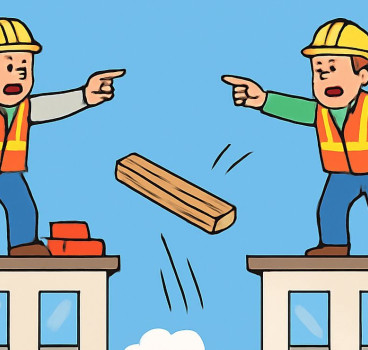Addressing the challenge of aging infrastructure
Beneath our busy city streets and towering buildings lies a hidden network of veins and arteries. It’s the infrastructure that keeps our urban centres functioning - from water pipes to sewers, much of it laid more than a century ago – a network which is now facing a critical challenge, writes John Ridgeway.
Across the globe, major cities are grappling with the problem of aging infrastructure. Decades of underinvestment, coupled with the relentless wear and tear of daily use, have left many crucial systems on the brink of failure.
Water and wastewater systems, laid over a century ago, are particularly susceptible to leaks, bursts and contamination, leading to water loss, service disruptions and public health concerns.
Such is the problem that the American Society of Civil Engineers' (ASCE) 2023 Infrastructure Report Card has assigned a grade of D+ to that nation's drinking water infrastructure, highlighting the critical need for investment.
This is because many urban water systems rely on cast iron or clay pipes laid over a century ago. These pipes are susceptible to corrosion, cracking and leaks due to the constant pressure and flow of water.
Estimates suggest that an average U.S. household leaks around 10% of the water it uses every day, often due to aging pipes within the home and distribution system. It is very much the same in many other parts of the developed world. On a larger scale, entire sections of piping infrastructure frequently fails, causing disruptions and necessitating costly repairs.
Even worse, leaks in aging pipes can create entry points for contaminants such as bacteria or pollutants to enter the drinking water supply. This can pose a serious threat to public health, leading to outbreaks of waterborne diseases. The city of Flint in Michigan, USA, gained national attention in 2014 when lead contamination in its water supply caused widespread health problems. Jackson, Mississippi, has also faced numerous water infrastructure issues in recent years, including boil water notices due to treatment plant problems and disruptions caused by aging pipes. Similar situations have occurred in the UK in recent weeks.

These kinds of issues are not just confined to America and the UK, but to dozens of major towns and cities across the world – and it is not just about water.
Transportation issues
Roads, bridges and public transportation systems are also showing their age. Potholes plague roadways, bridges require weight restrictions and outdated public transportation systems struggle to meet the needs of growing populations.
Years of wear and tear, coupled with harsh weather conditions, has led to the formation of potholes and cracks in roadways. These imperfections are damaging vehicles, causing accidents and are creating difficult and unpleasant driving experiences.
As urban populations grow, existing road networks are struggling to keep pace, leading to traffic congestion, longer commutes and reduced productivity. Deferred maintenance due to budgetary constraints is allowing minor road issues to escalate into major problems, requiring more extensive and expensive repairs later.
The problems also apply to bridges, particularly those that were built decades ago based on older design standards and materials. Many of these bridges are no longer able to handle the increased weight of modern vehicles and suffer from structural deficiencies. To ensure safety, weight restrictions are being placed on aging bridges, limiting their capacity for heavy trucks and emergency vehicles.
Aging power infrastructure
We can also see that aging power grids are struggling to keep up with increasing energy demands and are vulnerable to disruptions from extreme weather events. This aging infrastructure may not be able in the future to handle the increased demand for electricity due to factors like population growth, rising use of electronic devices and the proliferation of electric vehicles.
This is because aging equipment is more prone to failures, leading to power outages that disrupt businesses, homes and critical services. These outages can be particularly disruptive in the case of extreme weather events.
The consequences of failing infrastructure are far-reaching. Infrastructure failures are disrupting businesses, leading to lost productivity and economic costs. Transportation delays caused by road closures or bridge repairs are significantly impacting commerce.
Failing sewer systems are leading to overflows, contaminating waterways and increasing the risk of disease outbreaks. All this adds up to situations that negatively impact the quality of life for residents. Potholes damage vehicles, power outages disrupt daily routines and unreliable public transportation makes commuting a hassle.
Investing in the future
Addressing aging infrastructure requires a long-term commitment from governments, businesses and communities. Failing to address infrastructure needs will lead to more costly repairs, service disruptions and economic losses in the long run.
Cities need to explore creative ways to secure funding for infrastructure projects, while also implementing proactive maintenance programmes to maximise the lifespan of existing assets. Predictive maintenance and smart infrastructure also need to be introduced. These offer promising solutions for optimising infrastructure performance and ensuring long-term resilience.
The challenge of aging infrastructure is complex and requires a multifaceted approach. However, by working collaboratively and embracing innovative solutions, cities can overcome these challenges and build resilient infrastructure that supports a high quality of life for all residents.
By prioritising infrastructure investment, cities can build a more sustainable and resilient future for generations to come. Investing in our infrastructure is not just about fixing the past, but also about creating a foundation for a vibrant and thriving future.
Additional Blogs

The changing face of workplace AV and what FM managers need to know
In today’s hybrid workplaces, facilities managers can no longer treat audio-visual systems as background infrastructure - they are now mission-critical assets that directly influence productivity,...
Read moreConstruction’s obsession with blame instead of learning
Construction is one of the most technically advanced industries in the built environment, yet culturally it often behaves like one of the least reflective. When things go wrong and they frequently...
Read more

How risk Is routinely pushed down the supply chain
Risk is an unavoidable part of construction. Every project involves uncertainty around ground conditions, weather, design coordination, procurement, labour and programme. Yet while risk is inherent,...
Read more